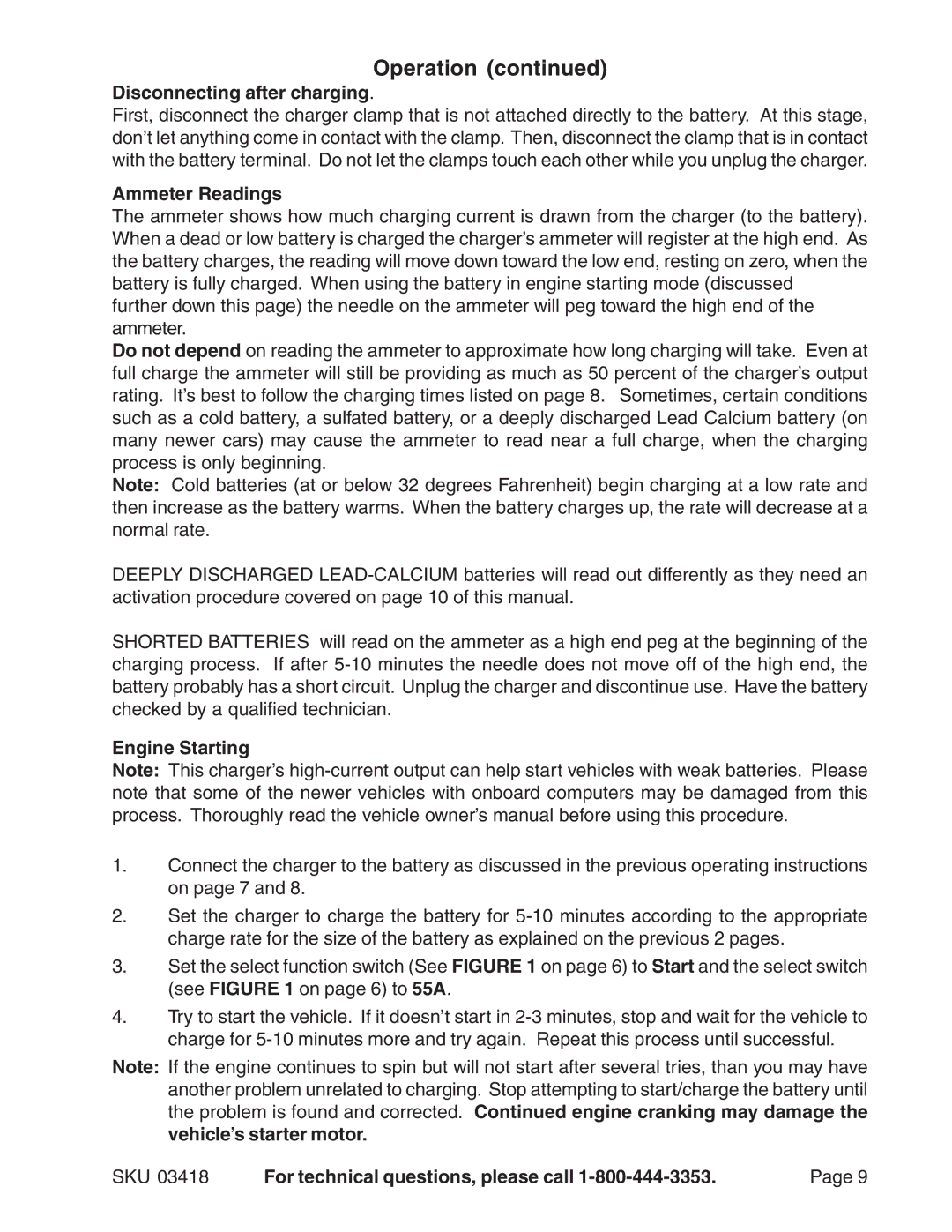Operation (continued)
Disconnecting after charging.
First, disconnect the charger clamp that is not attached directly to the battery. At this stage, don’t let anything come in contact with the clamp. Then, disconnect the clamp that is in contact with the battery terminal. Do not let the clamps touch each other while you unplug the charger.
Ammeter Readings
The ammeter shows how much charging current is drawn from the charger (to the battery). When a dead or low battery is charged the charger’s ammeter will register at the high end. As the battery charges, the reading will move down toward the low end, resting on zero, when the battery is fully charged. When using the battery in engine starting mode (discussed further down this page) the needle on the ammeter will peg toward the high end of the ammeter.
Do not depend on reading the ammeter to approximate how long charging will take. Even at full charge the ammeter will still be providing as much as 50 percent of the charger’s output rating. It’s best to follow the charging times listed on page 8. Sometimes, certain conditions such as a cold battery, a sulfated battery, or a deeply discharged Lead Calcium battery (on many newer cars) may cause the ammeter to read near a full charge, when the charging process is only beginning.
Note: Cold batteries (at or below 32 degrees Fahrenheit) begin charging at a low rate and then increase as the battery warms. When the battery charges up, the rate will decrease at a normal rate.
DEEPLY DISCHARGED
SHORTED BATTERIES will read on the ammeter as a high end peg at the beginning of the charging process. If after
Engine Starting
Note: This charger’s
1.Connect the charger to the battery as discussed in the previous operating instructions on page 7 and 8.
2.Set the charger to charge the battery for
3.Set the select function switch (See FIGURE 1 on page 6) to Start and the select switch (see FIGURE 1 on page 6) to 55A.
4.Try to start the vehicle. If it doesn’t start in
Note: If the engine continues to spin but will not start after several tries, than you may have another problem unrelated to charging. Stop attempting to start/charge the battery until the problem is found and corrected. Continued engine cranking may damage the
vehicle’s starter motor. |
| |
SKU 03418 | For technical questions, please call | Page 9 |
